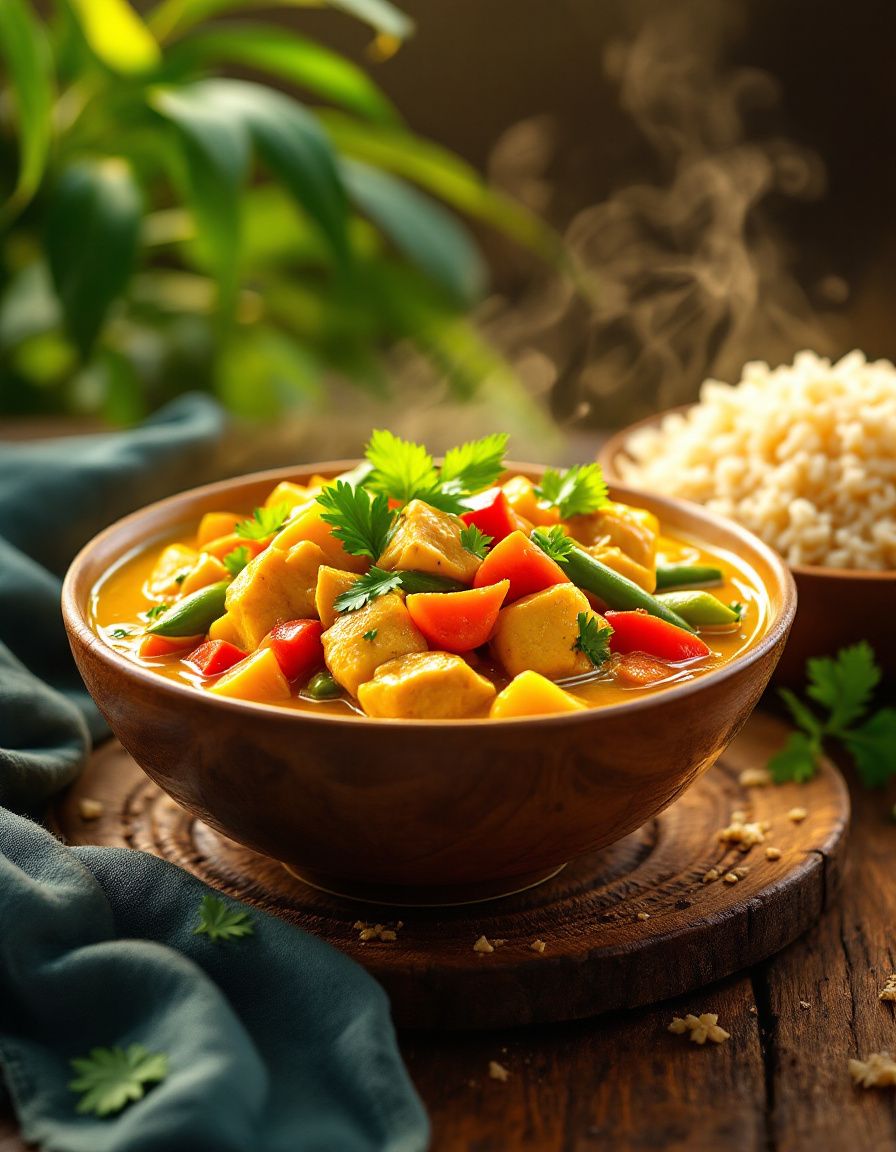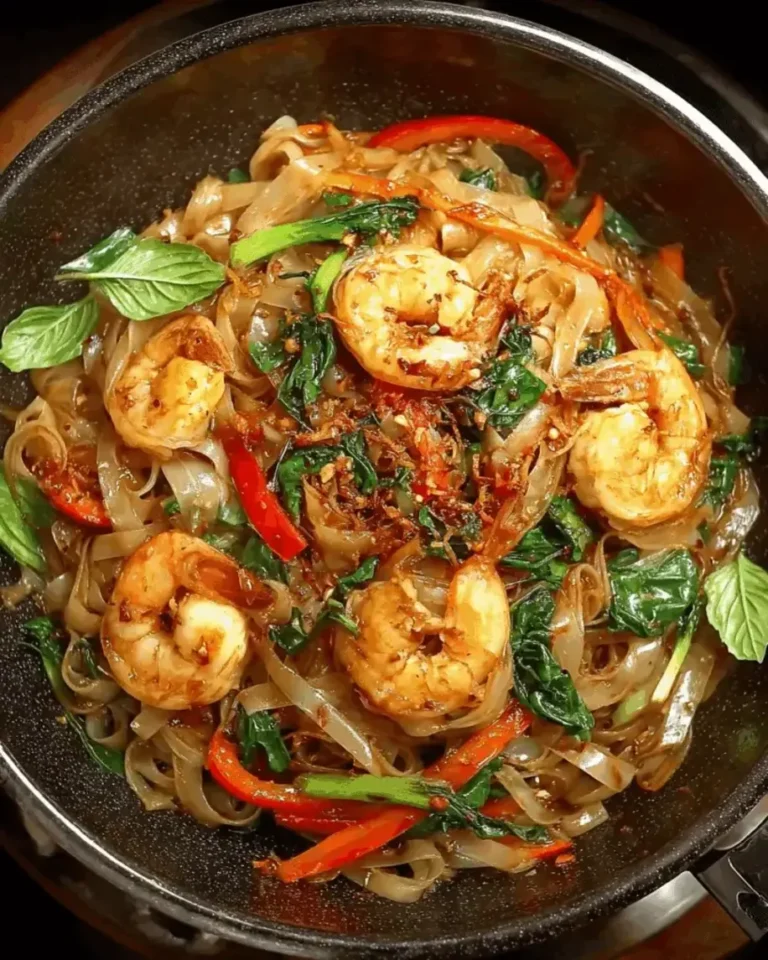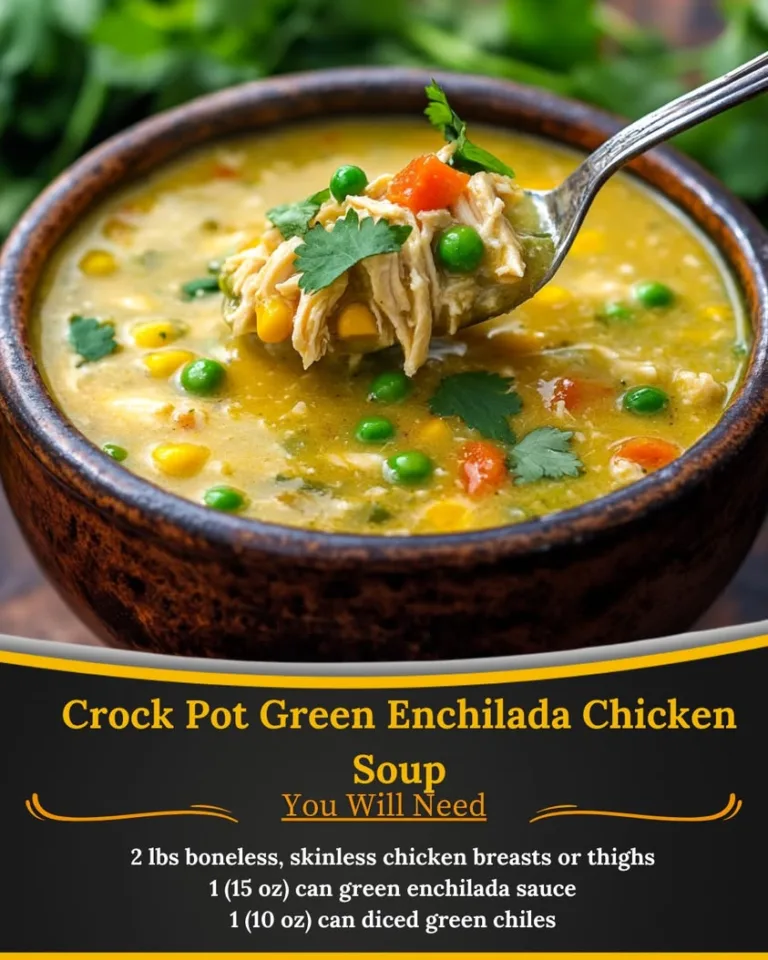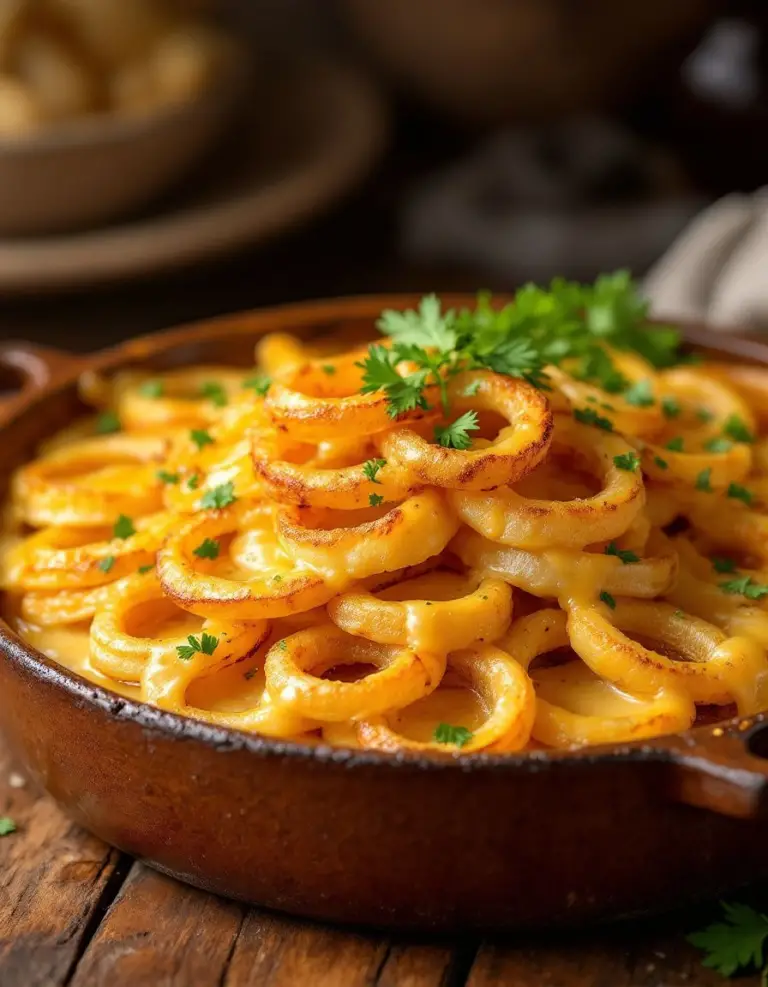Easy Yellow Chicken Curry – Authentic Thai Recipe in 30 Min

Yellow Chicken Curry Recipe – Easy & Authentic Thai Dish! 🍛✨
Yellow Chicken Curry is a quintessential dish that embodies the vibrant flavors of Thai cuisine. Known for its glorious yellow hue, this curry features a harmonious blend of spices, tender chicken, and creamy coconut milk. With its enticing aroma and rich taste, it makes for a fantastic centerpiece at any dinner table. Cooking this dish is not only a rewarding experience, but it also transports you straight to the streets of Thailand, making it a perfect option for those looking to explore authentic Asian flavors at home.
The heart of this Yellow Chicken Curry lies in its simplicity and depth of flavor. The combination of spices such as turmeric and coriander plays a crucial role in giving this dish its signature yellow color and unique taste. Coupled with fresh vegetables and vibrant herbs, each bite offers a delightful explosion of taste that will leave your taste buds singing. Whether paired with jasmine rice or served alongside fresh salad, this curry is sure to please anyone.
Quick Recipe Highlights
- Flavor Profile: The subtly sweet and mildly spicy taste combines beautifully with the creaminess of coconut milk, creating a well-rounded flavor experience.
- Texture: The soft, tender chicken contrasts with the slight crunch of vegetables, resulting in a satisfying mouthfeel.
- Aroma: The fragrant notes of lemongrass, ginger, and garlic waft through the kitchen, inviting everyone to the table.
- Visual Appeal: Bright yellow from turmeric mixed with the vibrant colors of bell peppers and basil makes this dish as beautiful as it is tasty.
- Skill Level Needed: This recipe is beginner-friendly, requiring minimal cooking skills and just a few key techniques.
- Special Equipment: A large pot or Dutch oven is ideal for even cooking and easy stirring.
Recipe Overview
- Difficulty Level: This Yellow Chicken Curry is rated as easy, making it suitable for novice cooks looking to gain confidence in preparing authentic Thai dishes.
- Category: It is a main dish that pairs perfectly with rice or noodles, ensuring a filling meal.
- Cuisine: Originating from Thailand, this curry reflects the country’s rich culinary tradition, blending influences from neighboring regions.
- Cost: The ingredients are affordable, making this a budget-friendly option for family meals.
- Season: This curry can be enjoyed year-round, but it is particularly comforting during the cooler months.
- Occasion: Perfect for weeknight dinners or casual gatherings with friends and family.
Why You’ll Love This Recipe
This Yellow Chicken Curry is not just delicious; its taste and texture appeal will enchant anyone who tries it. The balance of warmth from the spices mixed with the coolness of coconut milk creates a dish that is both comforting and refreshing. The tender chicken melts in your mouth, while the herbs and vegetables add brightness and crunch, making each forkful a delightful experience.
Convenience is another reason to love this recipe. With a quick prep time and minimal cooking effort, you can have a flavorful curry on the table in no time—perfect for busy weeknights or unexpected guests. The dish’s adaptability means you can easily swap in favorite vegetables or proteins, allowing for creativity in the kitchen without sacrificing authentic taste.
Nutritional advantages play a vital role in this curry’s appeal. Packed with protein from chicken, vitamins from vegetables, and healthy fats from coconut milk, it supports a balanced diet. Each ingredient not only adds flavor but also contributes health benefits, making it a wholesome choice for you and your family.
Social and entertaining value is at the heart of this dish. Serve it at gatherings, and watch as friends and family come together over shared love for good food. This Yellow Chicken Curry encourages conversation, laughter, and togetherness around the dinner table, making it more than just a meal; it’s an experience.
Lastly, the cost-effectiveness of this recipe is noteworthy. Using mostly pantry staples and easily accessible ingredients, you can create a restaurant-quality dish right at home. Enjoying Thai flavors doesn’t have to be expensive, making this Yellow Chicken Curry a delightful addition to your culinary repertoire.
Historical Background and Cultural Significance
Yellow Chicken Curry has deep roots in Thai cuisine, where curries have been a staple for centuries. The use of turmeric, which imparts the vibrant yellow color, reflects the influence of Indian spices on Thai cooking. This dish symbolizes the harmony of flavors that defines Southeast Asian cuisine, showcasing a blend of sweet, savory, and spicy elements.
Culturally, curries are often seen as meals for gatherings. In Thailand, they are served during festivities or family reunions, making this recipe an essential part of social culture. Eating together while sharing dishes fosters community, representing the importance of relationships in Thai society.
Over the years, the recipe has evolved, adapting to regional preferences and available ingredients. This flexibility has allowed it to incorporate diverse elements, making it a unique reflection of both tradition and innovation in culinary practices.
Different regions of Thailand boast their variations of this curry. In the south, for example, more coconut milk and fresh herbs are used, leading to a creamier, more aromatic result. This regional diversity illustrates the adaptability of Thai cuisine while remaining rooted in its historical significance.
Ingredient Deep Dive
Chicken
Chicken is the star ingredient, providing protein and a satisfying texture to the dish. Historically, chicken has been easy to raise and is widely available in Thai households, symbolizing abundance. Nutritionally, chicken is rich in protein and essential vitamins, promoting muscle health and wellbeing. When selecting chicken, look for fresh, high-quality cuts without additives. It can be stored in the refrigerator for 1-2 days or frozen for longer periods, while alternatives like tofu or shrimp can be used for variations.
Coconut Milk
Coconut milk is essential in Thai cuisine, celebrated for its rich flavor and creamy texture. Its history traces back to tropical climates where coconuts grow abundantly. Packed with healthy fats and vitamins, coconut milk enhances the nutritional profile of any dish. Opt for full-fat coconut milk for a luxurious feel, and store opened cans in the fridge tightly sealed for up to a week. If unavailable, alternatives like almond milk or cashew cream offer a similar texture, though the flavor may vary.
Turmeric
Turmeric not only colors the curry but is revered for its health benefits. In Thailand, it is used for both culinary and medicinal purposes, traced back to ancient herbal practices. Rich in curcumin, turmeric is known for its anti-inflammatory properties. When selecting, look for bright, fresh turmeric root or high-quality powder. Store it in a cool, dark place, and use within six months for optimal flavor. Alternatives include curry powder, yet the distinct flavor may differ.
Thai Basil
Thai basil is a fragrant herb instrumental in Thai cuisine, bringing a hint of sweetness and spice. Its origins date back to Southeast Asia and it holds culinary significance in a variety of dishes. Rich in antioxidants, it supports overall health. When purchasing, look for vibrant, fresh leaves. Store it in water like a bouquet at room temperature or wrap it with a damp paper towel. If unavailable, Italian basil or mint can be substituted, though the taste profile may shift.
Common Mistakes to Avoid
- Overcooking the chicken can lead to tough texture. Cook just until it’s no longer pink to keep it tender and juicy.
- Neglecting to taste as you cook can result in an unbalanced flavor. Always adjust the seasoning to suit your palate.
- Using low-quality ingredients can alter the taste significantly. Invest in fresh herbs and quality coconut milk for the best outcome.
- Skipping the aromatics like garlic and ginger may lead to a lack of depth in flavor. These ingredients are essential for a rich taste.
- Not allowing the curry to simmer enough can prevent flavor development. Give it time for the spices to meld together.
- Ignoring the importance of fresh seasoning herbs at the end can lead to a less vibrant taste. Traditional Thai dishes benefit from fresh herb garnishes.
- Using the wrong type of coconut milk may affect consistency. Choose full-fat for creaminess and richness.
- Rushing the prep process can lead to unevenly cut vegetables. Take time to chop uniformly for consistent cooking.
- Failing to consider the pairing options may leave the dish unbalanced. Serve with rice or noodles to round out the meal.
- Not following the correct order of ingredients can impact the dish. Layering spices and adding aromatics first is key to building flavor.
Essential Techniques
Simmering
Simmering is a crucial technique that blends flavors without boiling away the sauce. You can master this by bringing your curry to a gentle boil and then reducing the heat to maintain a light simmer. Watch for visual cues like bubbles rising gently.
Cooking Aromatics
Cooking aromatic ingredients like garlic and onions first unleashes their essential oils, amplifying flavor. To perfect this technique, sauté them on a moderate heat until fragrant but not browned. Signs of success include a fragrant kitchen and lightly translucent aromatics.
Layering Flavors
Layering flavors ensures depth in your dish. Start with spices, then add liquids, followed by proteins and vegetables. This order allows each ingredient to contribute its unique essence effectively.
Balancing Flavors
Balancing sweet, savory, and spicy will elevate your dish. Taste frequently and adjust as needed. Adding a touch of sugar, salt, or acidity can significantly enhance the overall flavor profile.
Pro Tips for Perfect Yellow Chicken Curry
– Use fresh herbs as a garnish to elevate the presentation and flavor, adding brightness to the dish.
– Adjust spice levels by adding more chili or reducing the quantity of curry paste as per preference.
– For added creaminess, consider adding a splash of coconut cream at the end of cooking.
– Experiment with different vegetables based on seasonal availability for variety and nutrition.
– Marinating chicken in coconut milk before cooking enhances tenderness and flavor absorption.
– Allow the curry to rest for a few minutes after cooking; the flavors will meld even further.
– Serve with lime wedges to add a zesty kick that complements the spices in the curry.
– Use jasmine rice for an authentic pairing, but feel free to substitute with quinoa for a nutritious twist.
Variations and Adaptations
One popular variation of Yellow Chicken Curry is the addition of potatoes, which absorb the flavors beautifully while adding heartiness to the dish. This adaptation is perfect for creating a more filling meal. Seasonal adaptations can include using vegetables like squash or asparagus in the spring, resulting in a fresh take on the classic recipe.
Dietary modifications are also possible—swap the chicken for chickpeas or tofu for a plant-based option, making this curry suitable for vegans. Flavor variations can be achieved by experimenting with different curry pastes, such as red or green, for different spice levels and taste profiles.
Texture modifications can involve puréeing part of the sauce for a creamier consistency. Finally, presentation alternatives like serving in a bowl with accompanying garnishes can create a visually stunning dish, ensuring it attracts all the right attention.
Serving and Presentation Guide
Plating techniques can greatly influence the visual appeal of your Yellow Chicken Curry. Use a shallow bowl to display the curry, allowing for the vibrant colors to shine. Consider garnishing with freshly chopped Thai basil or cilantro for a lovely contrast.
Traditional accompaniments are essential; jasmine rice or a side of crusty naan will complement the curry perfectly. Modern serving suggestions can include creating a curry bar with various toppings, such as crushed peanuts or a drizzle of sweet chili sauce.
Temperature considerations are also critical. Ensure the curry is served hot, while rice can be lightly warmed before serving. Portion control can be managed by using smaller bowls, encouraging seconds while keeping servings reasonable.
Wine and Beverage Pairing
When it comes to wine pairings, a fruity Riesling or bold Sauvignon Blanc pairs beautifully with the Yellow Chicken Curry, balancing its spices without overwhelming the palate. For non-alcoholic alternatives, consider coconut water or herbal iced teas that mirror the essence of Thai flavors.
If you prefer coffee or tea, opt for a sweet Thai Iced Tea, which complements the richness of the curry while enhancing the meal experience. Temperature considerations are essential; serve white wines chilled to refresh against the curry’s heat.
Storage and Shelf Life
To store your Yellow Chicken Curry, allow it to cool completely, then transfer it to an airtight container. It can be refrigerated for up to 3-4 days. For longer shelf life, consider freezing it; ensure it is in a freezer-safe container and can last up to 3 months, retaining its flavor.
Signs of spoilage to look out for include an off smell or discoloration. When reheating, ensure that the curry is heated thoroughly to an internal temperature of 165°F (74°C). If frozen, defrost overnight in the refrigerator for best results before reheating.
Make Ahead Strategies
For a successful make-ahead strategy, prepare your Yellow Chicken Curry up to the simmering stage, then store it in the fridge overnight. Reheating allows for fuller flavors to develop. Additionally, chopping vegetables and measuring spices in advance can save time on the day of serving.
If making the curry ahead, store the chicken separately to prevent overcooking when reheating. Consider adding fresh herbs at the end of cooking to maintain vibrant flavors. For the best results, assemble just before serving to elevate freshness.
Scaling Instructions
Halving the Yellow Chicken Curry recipe can be easily achieved by dividing all ingredients by two while retaining the method. For doubling or tripling, remember to use a larger pot, ensuring even cooking.
Be mindful of cooking times as larger quantities may take longer to reach the desired simmer. Proper storage is essential; if scaling up, consider using multiple containers to portion leftovers conveniently.
Nutritional Deep Dive
The macro breakdown highlights a healthy balance of proteins, carbohydrates, and fats. Chicken provides lean protein, while coconut milk offers healthy fats that contribute to satiety. The meal is well-rounded, supporting energy needs and muscle health.
Micronutrient analysis involves assessing the vitamins and minerals found in the dish, including potassium and vitamin C from vegetables. The health benefits extend to its anti-inflammatory properties from turmeric and antioxidants from herbs.
Dietary considerations should focus on serving sizes to maintain balance. Weight management tips might include pairing the curry with whole grains like brown rice for added fiber, enhancing satiety.
Dietary Adaptations
For gluten-free adaptations, ensure all sauces and pastes are labeled gluten-free. Dairy-free versions can be made simply by omitting heavy creams and relying on coconut milk exclusively. Vegans can replace chicken with tofu or tempeh to enjoy the recipe fully.
Low-carb and keto adaptations might involve using zucchini noodles instead of rice, minimizing carbohydrate intake while still enjoying the flavors of the curry. The paleo diet can also embrace this dish by sticking to whole, non-processed ingredients.
For those following a low-FODMAP diet, vegetables such as bok choy and carrots can be used instead of garlic and onion, maintaining flavorful integrity without triggering digestive sensitivities.
Troubleshooting Guide
Texture issues can arise if the curry is over-simmered, leading to a breakup of chicken fibers. To fix this, gently stir and reduce cooking time. Flavor balance problems may occur if too much salt is added; counter this with a touch of sugar or lime juice.
Temperature problems can often be resolved by allowing your curry to simmer longer on low heat for even cooking. Equipment challenges may stem from inadequate pot sizes—ensure you’re using a suitable size for your volume.
Ingredient substitutions like using dried herbs instead of fresh can lead to flavors suffering; if you must substitute, consider adjusting quantities for potency. Timing concerns regarding undercooked chicken can be rectified by ensuring it simmers until the internal temperature reaches a safe level.
Recipe Success Stories
Community feedback on this Yellow Chicken Curry has been overwhelmingly positive. Readers often share their adaptations, including additional vegetables or spice adjustments, leading to inspiring variations. Many highlight the ease in which the recipe comes together, making it a weeknight favorite.
Variation successes often involve using different proteins, like shrimp or even chickpeas for a vegetarian take. Adaptation stories abound from those who have discovered this dish while traveling, allowing them to replicate authentic Thai flavors at home.
Photography tips from the community suggest vibrant garnishing and using natural light to capture the dish beautifully, enhancing visual appeal and encouraging others to try.
Frequently Asked Questions
Can I use frozen chicken for this recipe?
Yes, you can use frozen chicken, but it’s best to thaw it in the refrigerator overnight before cooking. This helps it cook evenly and safely.
How can I make this dish spicier?
To increase the spiciness level, add more curry paste or fresh chilies according to your heat preference. Adjust gradually to reach the desired taste.
What sides go well with Yellow Chicken Curry?
This curry pairs wonderfully with steamed jasmine rice, noodles, or even a refreshing cucumber salad. Consider garnishing with fresh herbs for added flavor.
Can I make this curry in advance?
Yes, you can prepare this curry a day in advance. It actually improves in flavor after sitting. Store it in the refrigerator and reheat before serving.
What is the best way to store leftovers?
Store leftover Yellow Chicken Curry in an airtight container in the refrigerator for up to 4 days or freeze it for up to 3 months. Always reheat until hot before consumption.
Is it possible to substitute coconut milk?
Yes, you can use almond or cashew milk for a lighter alternative, but creamy coconut milk adds a unique richness characteristic to this dish.
Can I use other types of meat?
Absolutely! While chicken is traditional, you can use beef, pork, or tofu for a vegetarian option. Adjust cooking times as needed.
What if I don’t have Thai basil?
If Thai basil isn’t available, you may substitute it with Italian basil or regular basil, though the flavor will differ slightly.
Can I make this recipe gluten-free?
Yes, this recipe is naturally gluten-free. Just ensure that any sauces or pastes used are labeled gluten-free.
How spicy is this dish?
The spiciness can vary based on the curry paste used. For a milder flavor, reduce the amount of paste or choose a milder brand.
Can I add vegetables to the curry?
Definitely! Adding vegetables like bell peppers, peas, or carrots will not only enhance the flavor but also add nutritional value.
Additional Resources
For those looking to venture further into Thai cuisine, explore related recipes such as Pad Thai, Tom Yum Soup, or Mango Sticky Rice. Technique guides on proper knife skills and ingredient preparation can elevate your culinary experience.
Ingredient resources including spice guides, health benefits of herbs, and seasonal variations are invaluable for enhancing your cooking repertoire. Consider investing in quality kitchen equipment like non-stick pans and spice grinders for best results.
Join the Conversation
We invite you to share your experiences with this Yellow Chicken Curry, from your personal tips to photographs of your completed dish. Engage with us on social media platforms, and leave your comments or reviews to help fellow home cooks discover this recipe.
Your suggestions are highly valued; let us know how you’ve modified the recipe or if you have a different approach! Together, we can create a community that shares a love for delicious homemade meals.
The Recipe
Yellow Chicken Curry
Serves: 4
Prep Time: 15 mins
Cook Time: 30 mins
Total Time: 45 mins
Kitchen Equipment Needed
- Large pot or Dutch oven
- Chopping board
- Sharp knife
- Measuring cups and spoons
- Wooden spoon or spatula
Ingredients
- 1 lb chicken breast, cut into bite-sized pieces
- 1 can (13.5 oz) coconut milk
- 2 tablespoons yellow curry paste
- 2 tablespoons vegetable oil
- 1 onion, sliced
- 1 bell pepper, sliced
- 1 tablespoon fresh ginger, minced
- 2 cloves garlic, minced
- 1 tablespoon fresh lime juice
- Salt and pepper to taste
- Fresh cilantro or Thai basil for garnish
Directions
- In a large pot, heat the vegetable oil over medium heat. Add the onion and sauté until translucent.
- Add the ginger and garlic, cooking until fragrant.
- Stir in the yellow curry paste and cook for a few minutes to release the flavors.
- Add the chicken pieces, cooking until they are no longer pink on the outside.
- Pour in the coconut milk, stirring well to combine. Bring to a gentle simmer.
- Add sliced bell pepper and allow the curry to simmer for 15-20 minutes, until the chicken is cooked through.
- Season with lime juice, salt, and pepper. Remove from heat.
- Serve hot, garnished with fresh herbs over rice or noodles.
Recipe Notes
- For a spicier curry, add a chopped chili pepper along with the chicken.
- Feel free to substitute chicken with tofu or shrimp for different proteins.
- Leftovers can be stored in the refrigerator for up to 4 days or frozen for later use.






